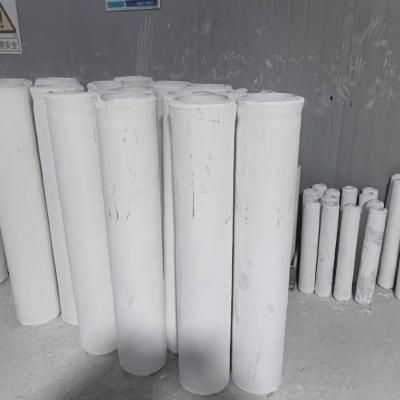
Advanced substance boast outstanding molecular traits, establishing them optimal for a inclusive array of deployments. Originating from orbital and automobiles to digital devices, these constituents are rapidly developing to comply with the criteria of a modern world.
- Their strength and tolerance to intense environments make them pivotal for leading apparatus.
- What's more, technical ceramics contribute edges in terms of longevity, advancing the innovation of advanced apparatuses.
Forming Substances: Created for Superior Functionality
Manufactured ceramics shine in rigorous tasks due to their extra special characteristics. Built from carefully picked raw materials and subjected to meticulous processing methods, these modern elements exhibit exceptional sturdiness, oxidation resistance, and endurance to severe heat, corrosion, and erosion. From space components to fine crafting tools, industrial ceramics yield unmatched operation across wide-ranging domains. Their versatility allows withstanding harsh settings, warranting lastingness and dependability. As modernization progresses, the call for high-performance components grows, cementing the key position of industrial ceramics in shaping a thriving era.
Pioneering Ceramics: Expanding Matter Margins
Substances, revealing remarkable rigidity and tenacity, are undergoing a shift. Modern ceramics, engineered with diligent control over their composition and minutiae, surpassing the thresholds of the total of realizable. These materials exhibit a wide assortment of features, qualifying them advantageous for taxing territories such as astronautics, medicine, and energy. From lightweight parts that weather extreme climatic environments to body-friendly implants that merge effortlessly with the physical form, advanced ceramics are altering our surroundings.
Detailed Ceramic Crafting: Fulfilling Stringent Standards
Manufactured ceramic fabrication has advanced considerably in recent eras, enabling the creation of multi-dimensional and highly useful ceramic components. These elements are vital across a comprehensive range of markets, including aeronautics, biomedical, and tech domains. Fulfilling the stringent standards for these scenarios calls for meticulous fabrication practices that warrant dimensional precision, surface texture, and material specifications. Contemporary ceramic fabrication processes incorporate manifold methods, including slip casting, injection molding, and additive manufacturing. These methods facilitate the assembly of intricate designs and accurate components with exceptional consistency. Moreover, advances in material technology have produced new ceramic blends endowed with superior attributes. These ceramics show increased fortitude, durability, and tolerance to harsh temperature conditions, making possible their use in critical sectors.
The prospects for exact ceramic fabrication are tremendous. As investigations and advancement make headway, we can reckon on even more cutting-edge techniques and forms that will moreover push the confines of what is attainable in this domain.
Exceptional Ceramic Products for Extreme Settings
Advanced ceramic elements exhibit extraordinary resilience and safeguards against harsh circumstances, making them perfect for challenging purposes in orbital territories. These advanced ceramics can bear extreme climatic loads, guard against corrosion, and sustain their operation under intense operational weights. Their distinctive nanostructural specifications support solid utility in inimical circumstances, including industrial furnaces, propulsion systems, and atomic reactors.
- Engineered ceramic blends
- Heat resilience
- Reduced mass
Hybrid Materials: Fusing Strength and Performance
Engineered composites furnish a convincing mix of mechanical robustness and distinct specialized features. Through the merging of ceramic elements within a binder, these materials achieve remarkable capabilities. This fusion results in heightened endurance against high temperatures, wearing, and chemical degradation, rendering them fit for critical deployments in aerospace, motoring, and electricity industries. Furthermore, ceramic composites can be personalized to possess exclusive properties like electrical conductivity or biocompatibility, enhancing their usage across diverse fields.
Atomic Management in Leading Ceramics
Achieving intended qualities in progressive ceramics often involves precise supervision over their microstructure. Several engineering specifications, including sintering firing temperature, interval, and atmosphere, alongside the infusion of dopants or secondary phases, materially influence the distribution of aggregates, void fraction, and other microstructural aspects. Fastidious adaptation of these parameters allows for the enhancement of strength, breakage resistance, and heat transfer conductivity. Such as, boosting the sintering heating point can encourage grain expansion, thus increasing compactness and improving mechanical strength. Conversely, modifying the firing atmosphere may modify the oxidation degree of the ceramic, thereby influencing its electrical current flow or magnetic attributes. Grasping these relationships between microstructure and properties is crucial for forming advanced ceramics with bespoke traits suitable for numerous operations.
Hardness-Boosting Ceramics: Enhancing Resilience
Amid challenging production industries, where pieces are affected to constant scuffing and erosion, wares with notable sturdiness are paramountly crucial. Wear-resistant ceramics have developed as a top response, furnishing unparalleled toughness and capability in many markets such as processing, mining, and aerospace. These leading ceramics possess a singularity configuration that strengthens their facility to counteract crumbling. By exploiting the intrinsic hardness and density of ceramic materials, engineers can develop sturdy units capable of enduring the most difficult operating situations.
Medical-Grade Structures: Roles in Clinical Practice
Living tissue-compatible ceramics have overhauled the healthcare market, offering an array of beneficial qualities for wide-ranging uses. These products are chemically neutral within the flesh, minimizing sensitivity responses and fostering restoration. A prime application for biocompatible ceramics is in prosthetic supports, where their robustness sustains long-lasting reinforcement to damaged tissues.
Furthermore, they are adopted in tooth restoration, conveying a resilient and aesthetically pleasing solution for dentures. Ceramics also occupy a key part in drug delivery systems, supporting the precise application of therapeutics to specific zones within the human system.
- Over and above, biocompatible ceramics are progressively being probed for cellular therapy, serving as a foundation for cell proliferation.
- Thus, the future of biocompatible ceramics in medical science looks favorable, with continual research expanding their capabilities.
Ceramic Detection Devices: Boosting Accurate Readings
Smart ceramic detectors have emerged as essential precise ceramic modules across a multifaceted array of subjects. These gadgets exploit the special properties of ceramic materials to deliver highly precise readings. Their durability in {demanding|harsh| 